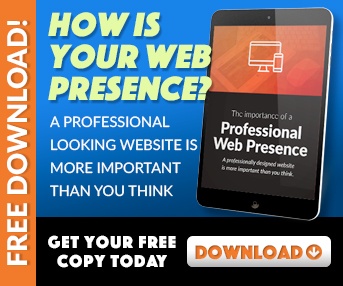In today's digital landscape, law firms face unique challenges in maintaining security and efficiency.
 Setting up a website for your business is crucial for establishing an online presence. However, the work doesn't just end there. The way your website is designed will determine how accessible your site is, which in turn determines how many visitors
Setting up a website for your business is crucial for establishing an online presence. However, the work doesn't just end there. The way your website is designed will determine how accessible your site is, which in turn determines how many visitors
actually visit your site.
Those who design websites often have their work cut out for them. This is because there are some aspects of designing a website that are easy to get right, such as the font, images etc.
But there are other aspects that are more difficult to get right, such as making the site viewable and accessible to all visitors, especially those with disabilities.
Here, we have to stop and ask ourselves, just how accessible does a website need to be? When can a designer stop tweaking a website trying to make it more easily accessible, until every unique feature of the website is stripped away, leaving a generic looking website that fails to capture the reader's attention?
To answer this question successfully, we need to stop imagining webdesign as a single process, but instead, view it as a collection of tricks and techniques that need to be applied concurrently to ensure accessibility. Let's take a look at some of the more important techniques:
The mouse is not the only method of navigating a site. Many readers prefer to use tab keys to move across pages. For these readers, it is important to design the site in such a manner that it becomes easy to identify which part of the site you are currently located in, and to make it easy to follow the movement of the keys across the site.
Related post: 3 ways to improve your website.
The site needs to be designed in such a manner that it manages to hold the focus of the user during navigation, no matter how the visitor chooses to navigate the site.
You need to ensure that your website allows for text enlargement. More and more people suffer  from weak eyesight, and they require the sites they visit to carry prominent lettering or the option of enlarging smaller text.
from weak eyesight, and they require the sites they visit to carry prominent lettering or the option of enlarging smaller text.
You also need to design the text in such a manner that enlarging it does not cause layout problems such as overlapping text, horizontal scrolling or narrow columns. Any of these problems can cause readability issues and possible cause the visitor to leave the site.
Most businesses use pdf files of their handbooks and other publications where much of the information relating to their business is detailed in the style of real-world books. This may work for the physical world, but in the virtual world, it is advisable to choose a more accessible style of publishing printed content. An HTML web page can better hold reader's attention rather than a pdf link which needs to be clicked on, downloaded and then opened.
Now that you have designed your website, the next step is to test and see if it clears the level of accessibility you desire. For this, you need to view the site the way a regular reader would by:
1. Using a screen reader to view the site.
2. Navigating the site without using your mouse.
3. Zooming in and out and noting how it affects the site's text and overall layout.
Remember, it's not just enough to own a good looking site filled with great content. You also need to make sure anyone and everyone is able to access the site's content.
Need to test your website for accessibility? Check out this link: https://dynomapper.com/blog/27-accessibility-testing/246-top-25-awesome-accessibility-testing-tools-for-websites

Don’t trust your company’s critical data and operations to just anyone! This business advisory guide will arm you with 21 Revealing Questions you should ask any computer consultant before giving them access to your network.
7500 Jefferson St. NE
Albuquerque, NM 87109
505-823-3400